Managing our health, as well as the health of our families can feel like a massive undertaking. There are so many factors that go into making healthy choices. These factors include education, family lifestyle, dietary restrictions, etc. Not only do we need to be mindful of the empty calories we are consuming, but we also need to ensure we receive the correct amount of vitamins and minerals. We also need to be mindful of the types of chemicals that are in our foods.
You may never have thought about the foods with the most plastic chemicals before, also known as plasticizers. However, these chemicals are so widespread throughout the food we consume daily, and with their adverse effects, it can be helpful to know which foods have the most significant amounts of phthalates. (Read our list of the worst foods for your health.)
To compile a list of foods with the most plastic chemicals, 24/7 consulted Consumer Reports and studied their list of foods used in their recent study. Additionally, we consulted Medical News Today, Clean Label Project, NutritionFacts.org, and PubMed Central for their study on “Dietary Predictors of Phthalate and Bisphenol Exposure in Pregnant Women.”
What Are Phthalates?

Today, many varieties of food undergo high processing and prepackaging, which may result in higher levels of plasticizers in the foods we consume. A plasticizer is a chemical widely used to make plastic last longer and become more adaptable. Since phthalates are one of the most common plasticizers, we cover them in this article. However, there are other plasticizers to be aware of, such as BPA, a common type of bisphenol.
With the widespread phthalates in our foods, most people have this chemical within us, even though the levels will vary. During the Consumer Report study published in January 2024, the measurement of phthalates used was nanograms. Although this may seem like such a small amount, it’s important to note two things. First, phthalates can adversely affect our health, even with low levels. Second, the levels of phthalates present in our bodies may be cumulative. Imagine the game Tetris; as each block falls, it stacks higher and higher. This is what may happen with phthalates, leading to adverse health concerns over a longer amount of time.
In the Consumer Reports study, 85 foods were tested and all of them contained phthalates except for one. The levels varied across the board and were not dependent on the type of packaging used or the type of food tested. While the results may seem depressing, there are steps you can take to reduce the amount of phthalates you consume daily. Knowing which foods have the largest amounts of phthalates is a good starting point.
What Are the Risks of Consuming Phthalates?
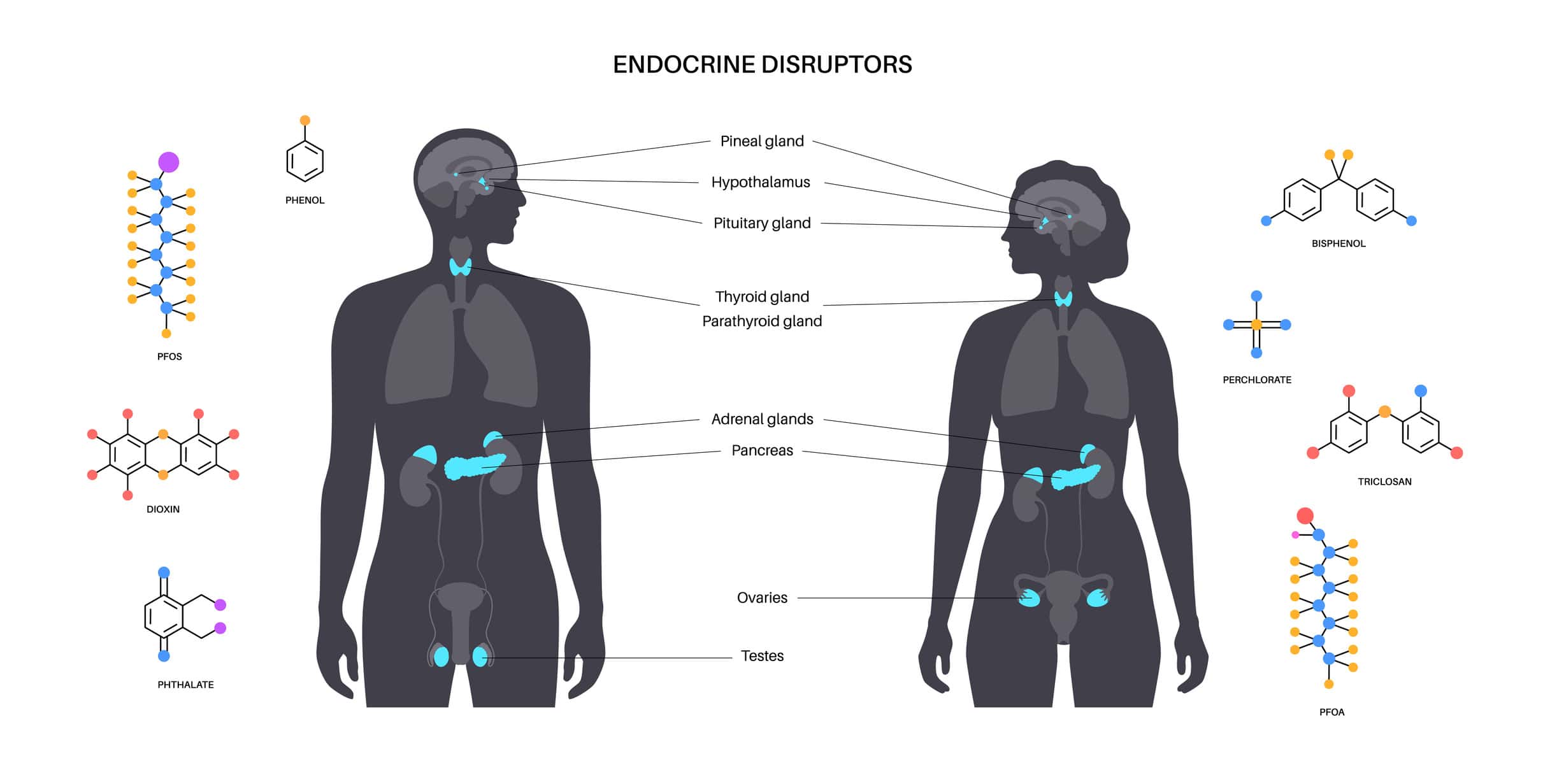
Even in small amounts, consuming phthalates can have adverse effects on your health. This is because this chemical is an endocrine disruptor. This means it interferes with estrogen and other hormones, and how they are produced and regulated.
When estrogen and hormones are disrupted, it can lead to a higher risk of a variety of health concerns, including:
- Premature birth
- Infertility
- Neurodevelopmental disorders
- Cardiovascular disease
- Diabetes
- Obesity
- Some cancers
One of the most commonly studied phthalates is DEHP. This type is typically found during testing and can lead to adverse health concerns. These concerns include:
- Insulin resistance
- Early menopause
- High blood pressure
- Reproductive issues
Phthalates are not only in our foods but also in other products we use daily. These other products include cosmetics, deodorants, soaps, and medical devices. These plastic chemicals can also be found in the dust in our homes. Therefore, it’s not possible to entirely escape these chemicals. However, our bodies can and do eliminate phthalates, yet the problem comes when this chemical leaks into our blood and tissues before they are eliminated.
How Do These Chemicals Get Into Our Food?
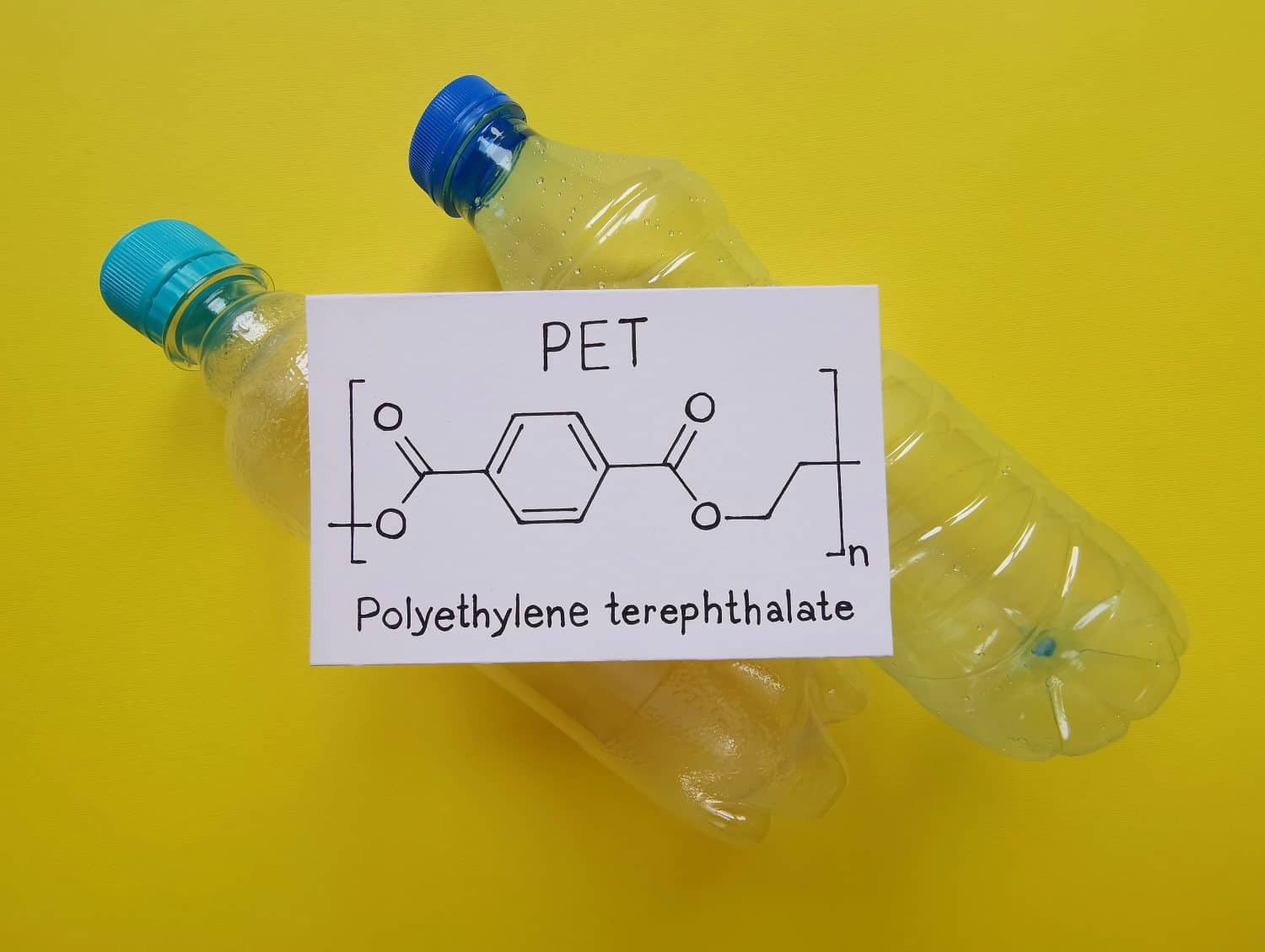
Another common question is: How do these chemicals get into our foods in the first place? The FDA and other food monitoring programs do not have high regulations and restrictions for these chemicals and have little to no testing requirements. While there should be more thorough monitoring of phthalates, it would be difficult to monitor to the extent of keeping this chemical out of our food entirely. This means that phthalates seep into our foods in numerous ways. These include:
- Environment
- Agriculture
- Processing
- Packaging
In a nutshell, landfills are full of this chemical; over time, it filters into the soil and water. Then, when plants and animals drink the water and eat the plants from the soil, the chemicals are present within their bodies. Phthalates are also present during processing and packaging, mainly if the food is highly processed.
What is a Nanogram?
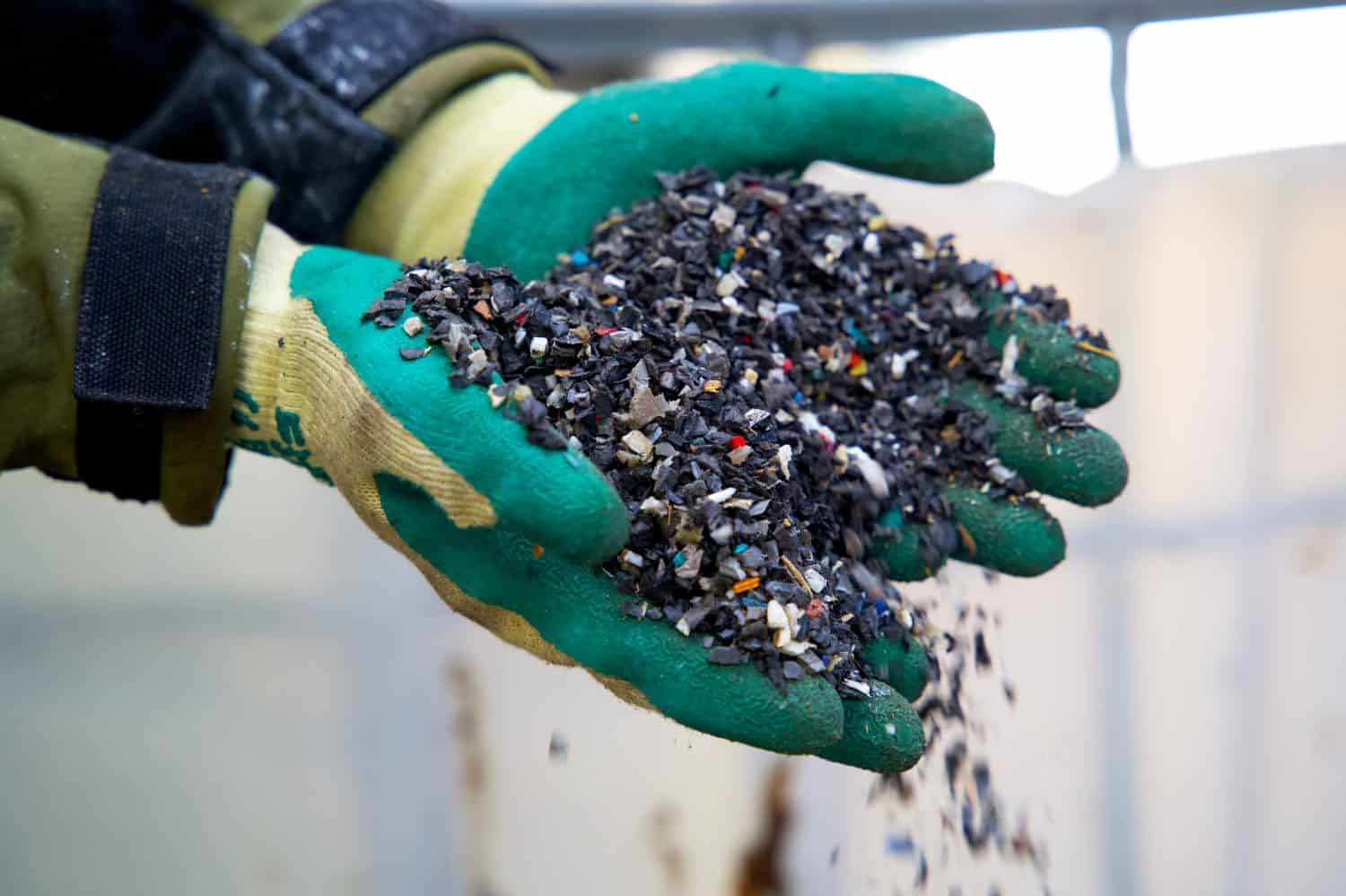
Phthalates are measured in nanograms, and the dictionary defines a nanogram as 1 billionth of a gram. Additionally, a gram is around 1/30 of an ounce. With this definition, you may think, well, that’s such a small number. However, phthalates may be cumulative, leading to the amount of this chemical in our bodies continuously growing the more we consume.
Additionally, phthalates can be harmful even in small doses. Therefore, it’s essential to be mindful of the chemicals in our foods.
Are you ready to see which common foods with the most plastic chemicals? Take a look below.
Annie’s Organic Cheesy Ravioli (can)
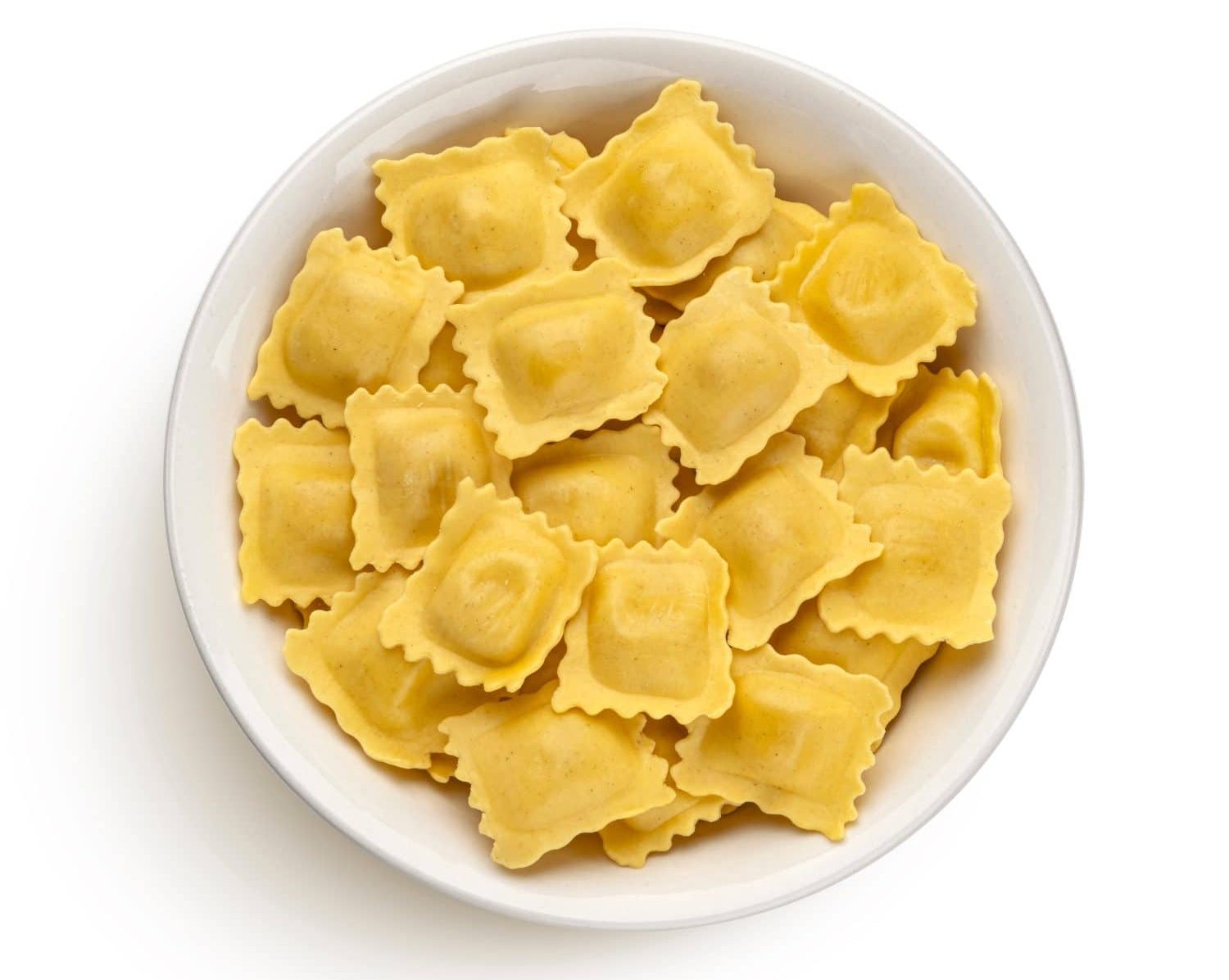
- Total Phthalates found per serving: 53,579 in nanograms
The food with the most plastic chemicals within the Consumer Reports study was Annie’s Organic Cheesy Ravioli in a can. Consumer Reports did send a letter to General Mills with concerns about the high levels they found within this company’s products. As a response, General Mills stated that “food safety is their top priority.”
Wendy’s Crispy Chicken Nuggets (paperboard)
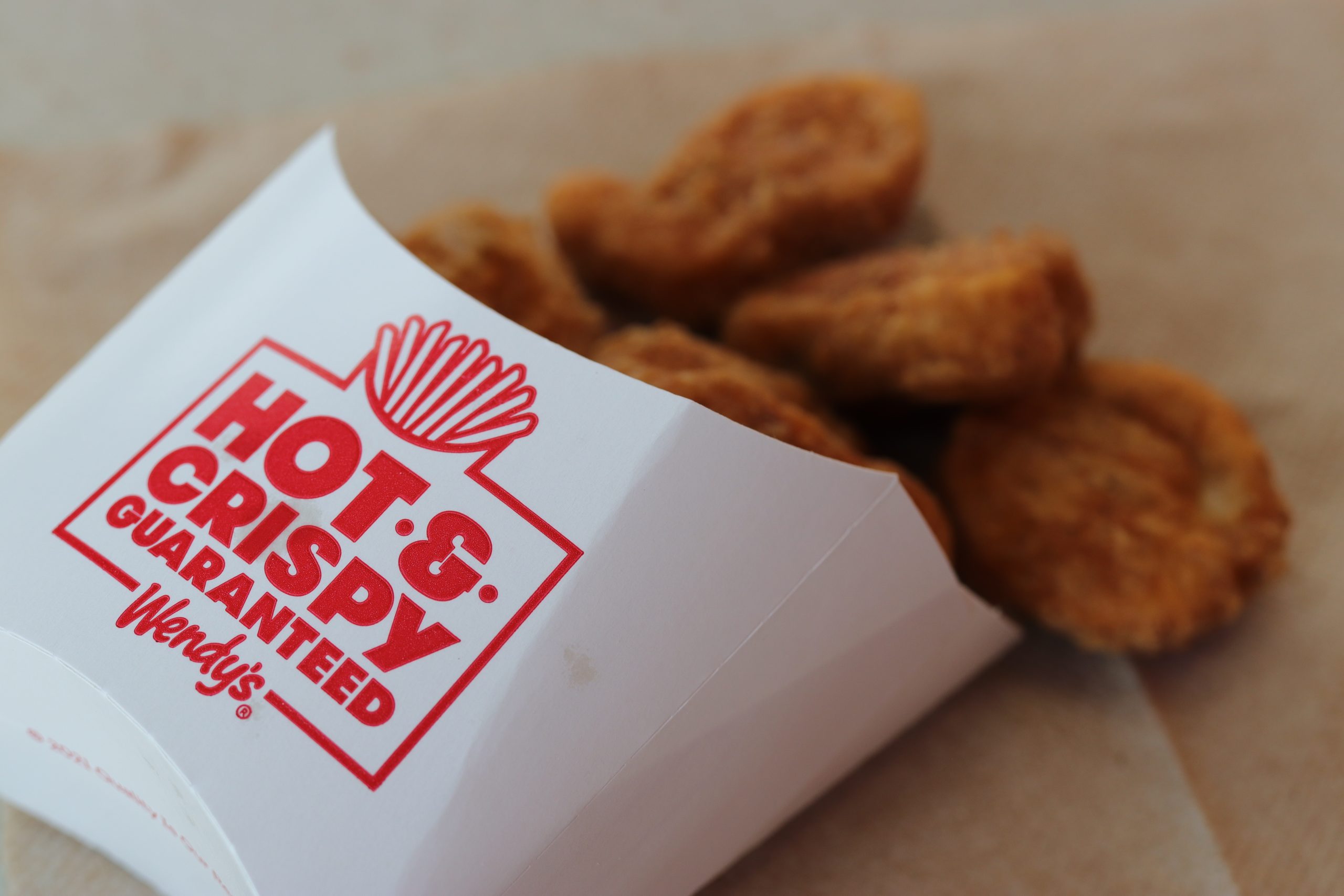
- Total Phthalates found per serving: 33,980 in nanograms
For those who love fast food’s convenience, it may be time to reconsider whether it is worth it. Most food with high levels of phthalates was from fast-food restaurants. One reason is because these foods are highly processed.
Moe’s Southwest Grill Chicken Burrito (aluminum foil)

- Total Phthalates found per serving: 24,330 in nanograms
Additionally, Dr. Stephanie Engel, an epidemiologist, stated that “those who eat a higher level of fast food will have higher levels of phthalates in their urine.” For example, Moe’s Southwest Grill Chicken Burrito wrapped in aluminum foil had a whopping 24,330 nanograms of phthalates.
Chipotle Chicken Burrito (aluminum foil)
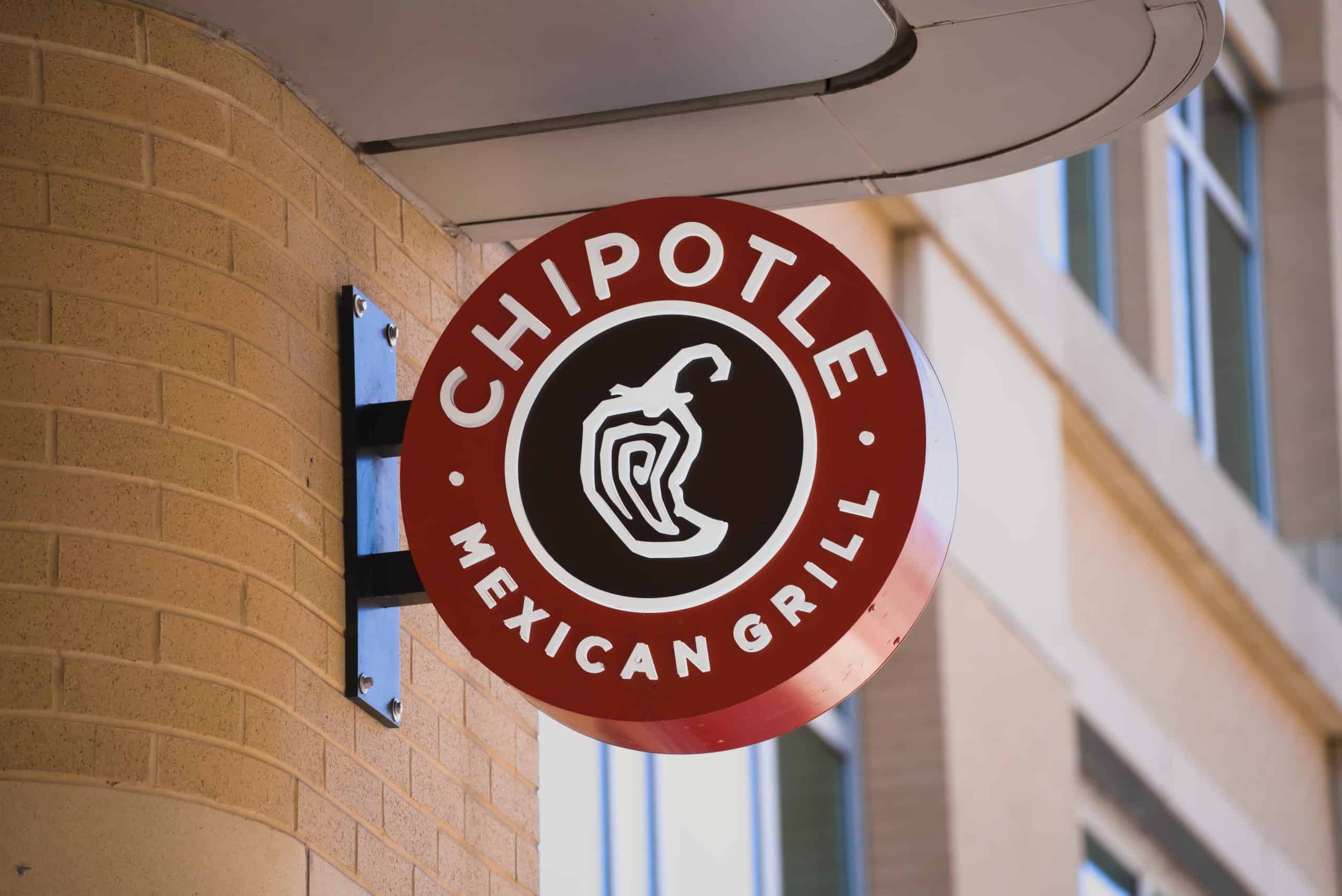
- Total Phthalates found per serving: 20,579 in nanograms
Medical News Today discussed another analysis in which fast food chains were studied. Chipotle was among those six fast-food restaurants where 64 food samples were collected. A few different types of phthalates were detected during this study, including DnBP, DEHP, and DEHT, a replacement plasticizer.
Burger King Whopper with Cheese (paper)
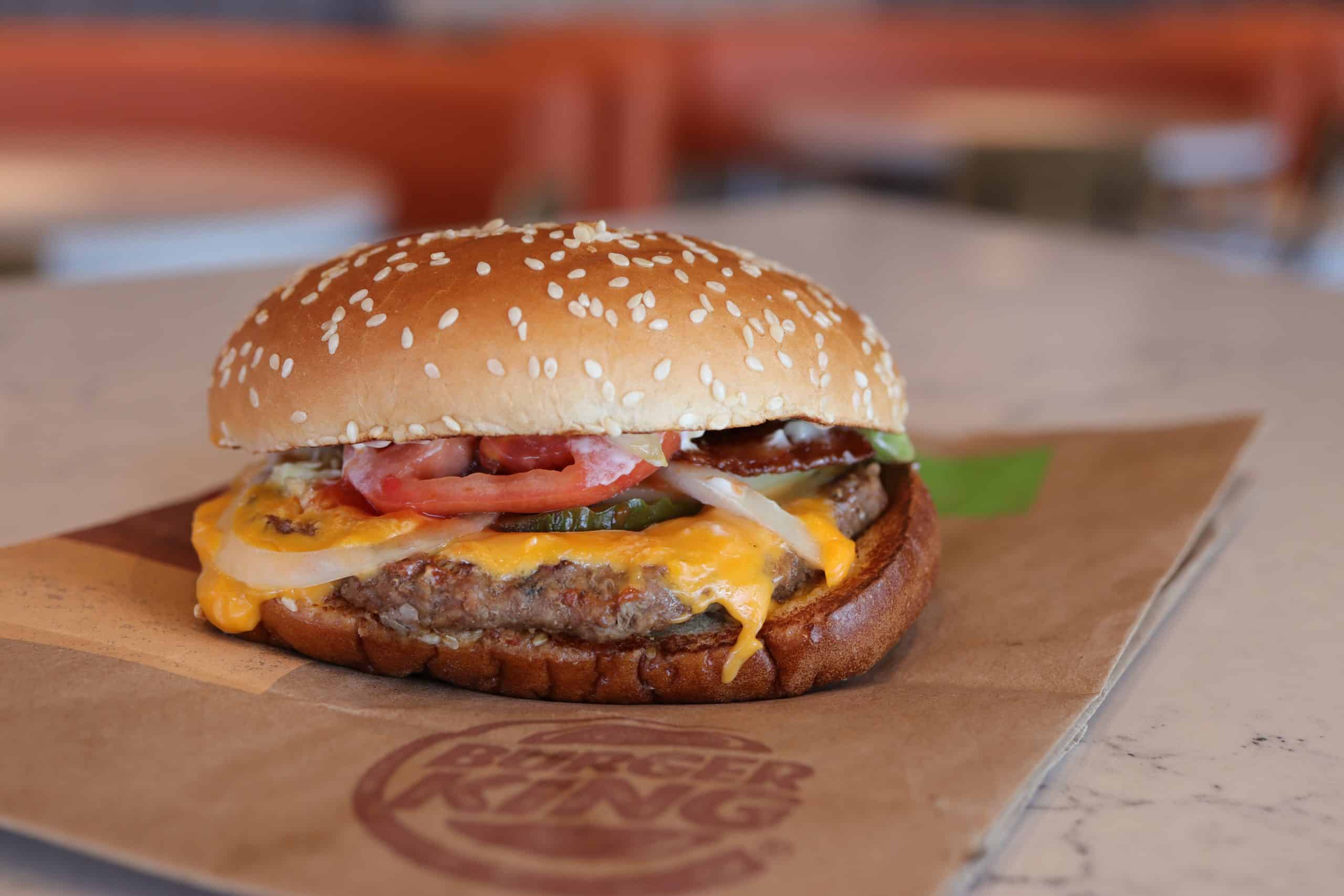
- Total Phthalates found per serving: 20,167 in nanograms
Another fast-food chain mentioned in the study in the previous slide was Burger King. An interesting finding was that food with meat typically has a higher concentration of plasticizers. This rings true for the Burger King Whopper with Cheese.
Fairlife Core Power High Protein Milk Shake Chocolate (plastic)
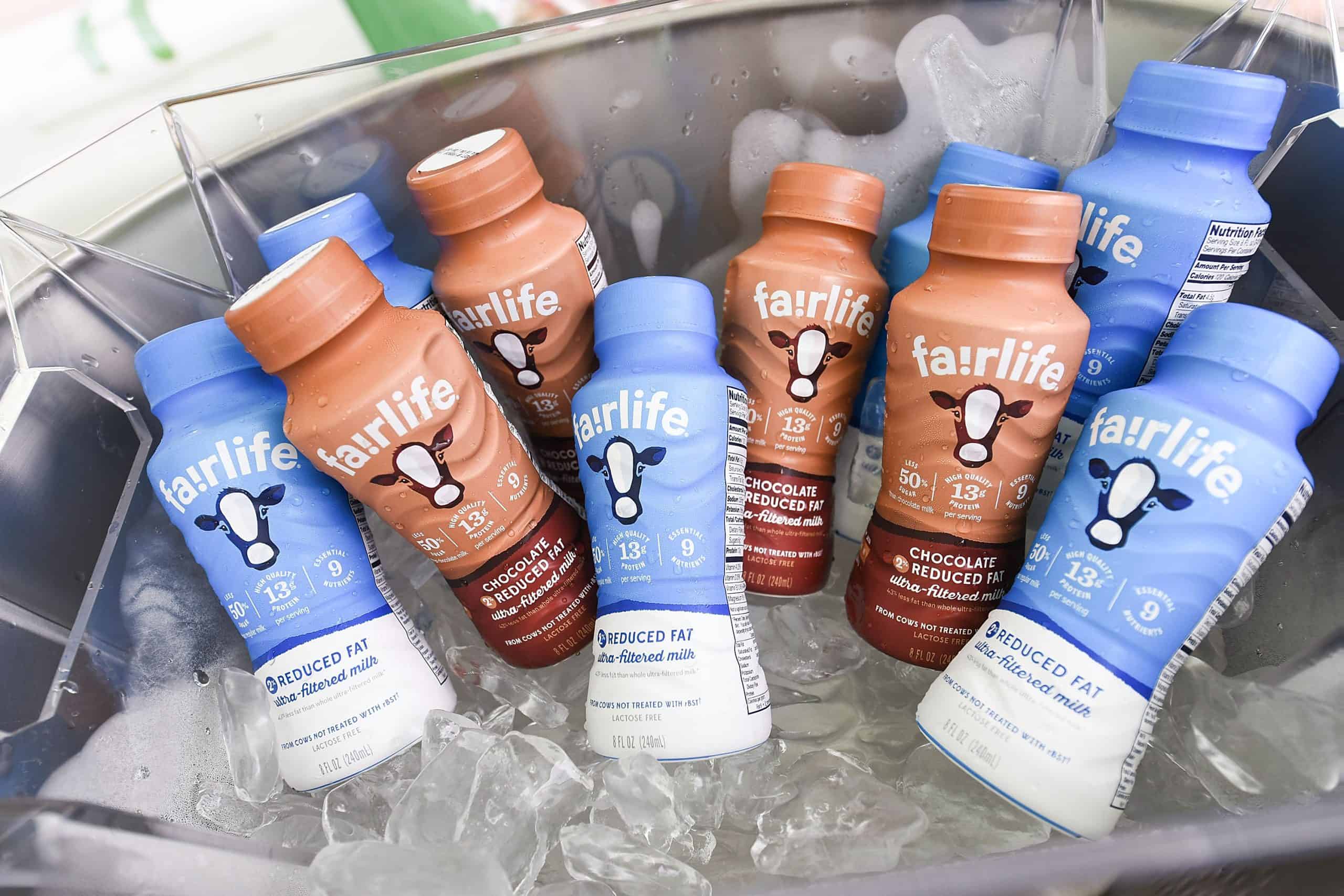
- Total Phthalates found per serving: 20,452 in nanograms
A protein shake is considered one of the healthier food products you can consume, especially after working out. However, protein milkshakes were also high in levels of phthalates, yet these were not the only chemicals to be concerned about. According to a 2018 study, protein milkshakes can also contain high levels of lead, cadmium, arsenic, and mercury.
Del Monte Sliced Peaches in 100% Fruit Juice (can)

- Total Phthalates found per serving: 24,928 in nanograms
Del Monte sliced peaches are another canned item with high phthalate levels. Government food monitoring programs do not have high regulations to monitor the concentration of these chemicals. Therefore, prepackaged foods tend to have a higher result of phthalates.
Chicken of the Sea Pink Salmon in Water Skinless Boneless (can)
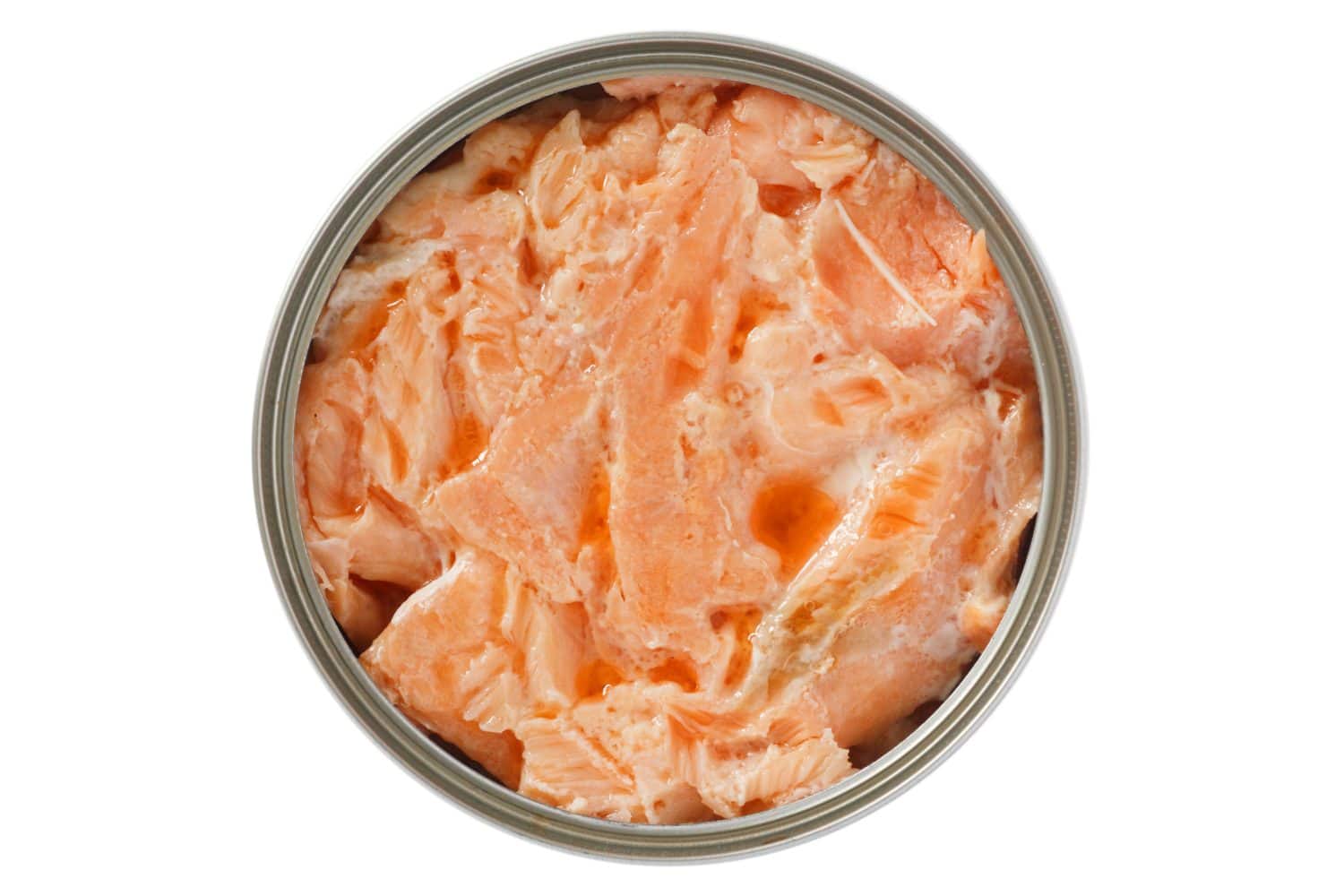
- Total Phthalates found per serving: 24,321 in nanograms
Chicken of the Sea is another canned product with higher levels of phthalates. More studies and reports across the globe have found that seafood also has a higher concentration of phthalates. These studies were done in Belgium, Norway, China, and the United Kingdom.
Burger King Chicken Nuggets (paper bag)
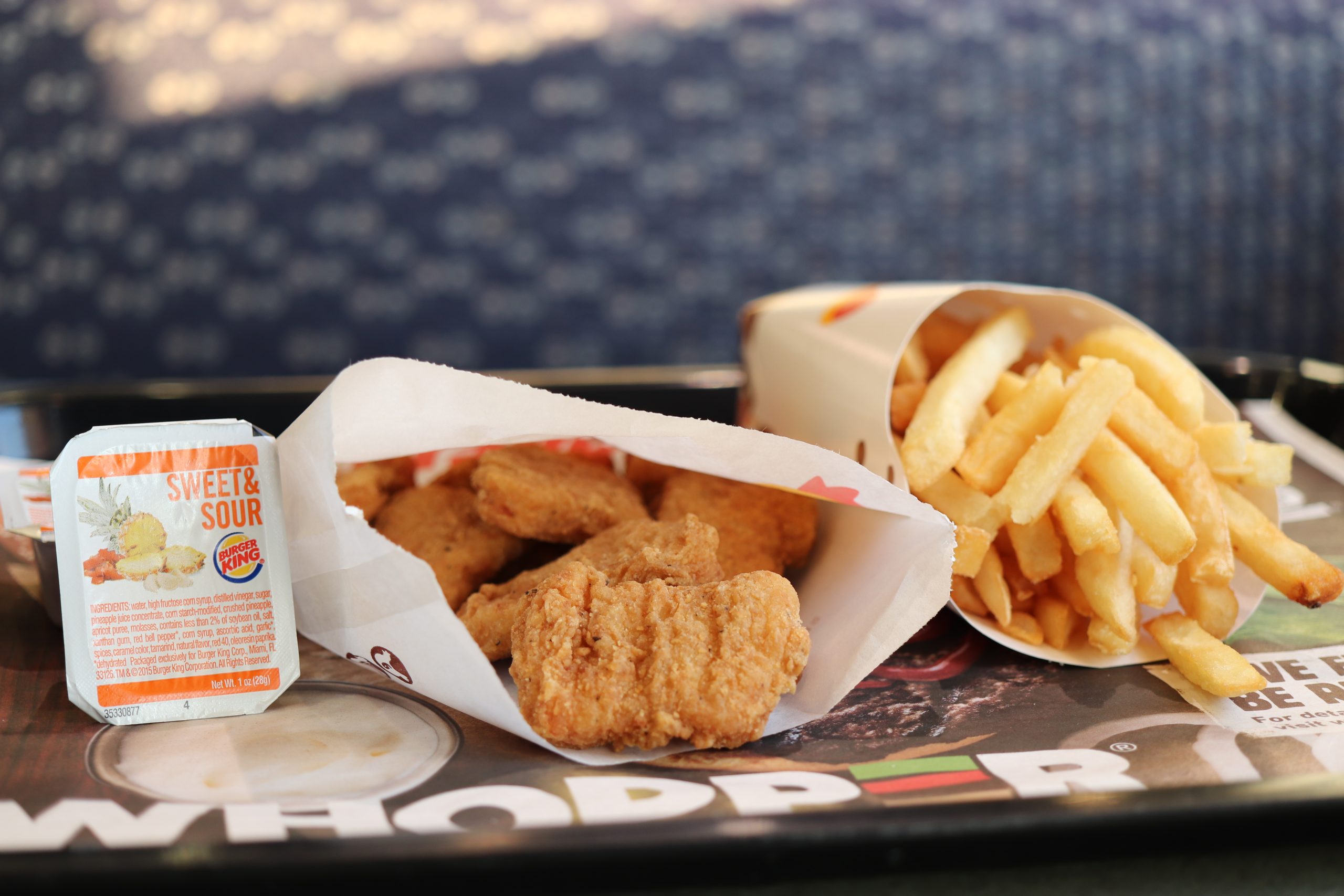
- Total Phthalates found per serving: 19,782 in nanograms
Fast food continues to be a lofty contender for high levels of phthalates. Yes, one reason is because they are highly processed. Another reason is the processing and packaging method. During this time, the chemicals can leak into the food.
Wendy’s Dave’s Single with Cheese (aluminum foil/paper wrap)
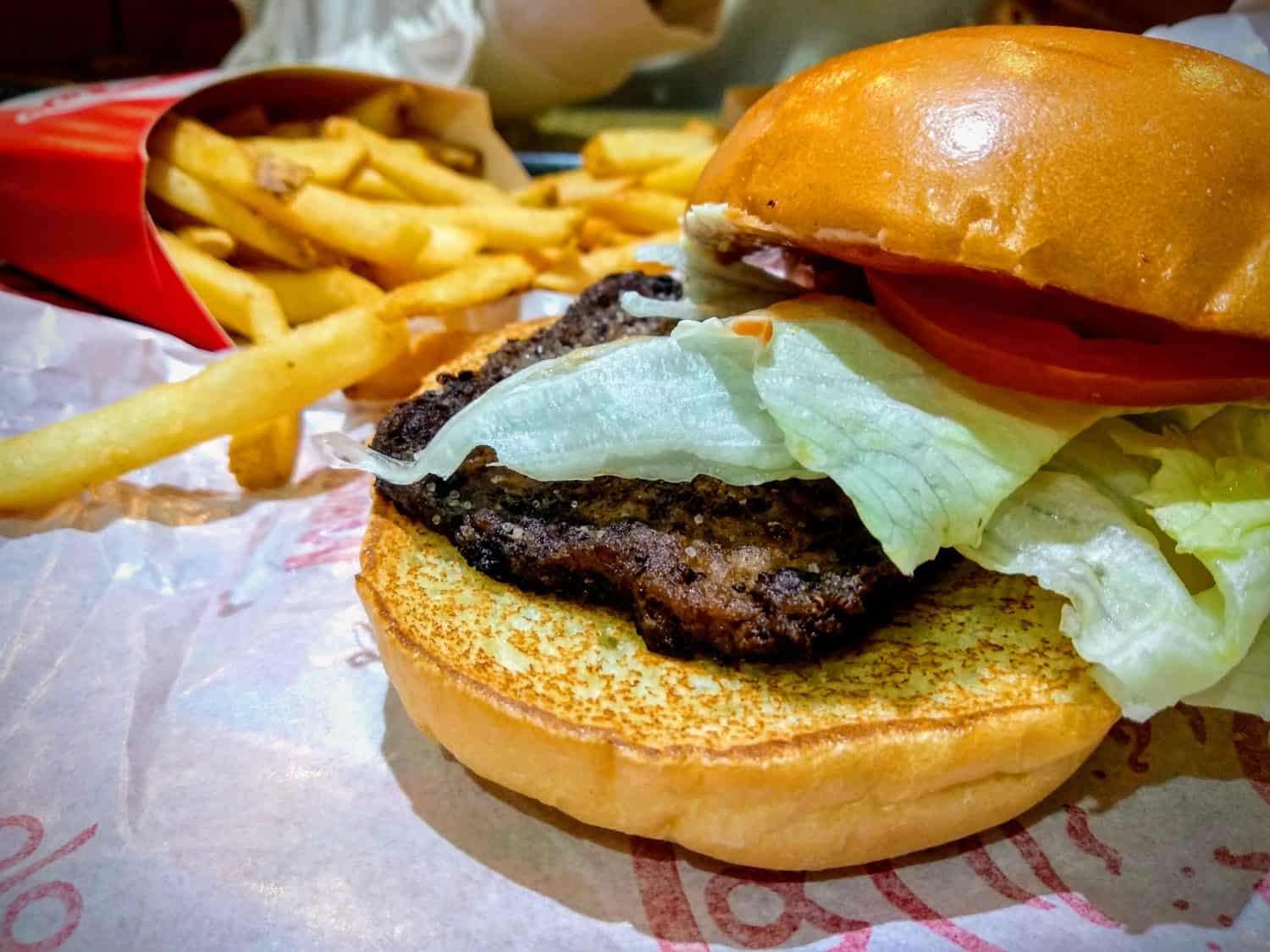
- Total Phthalates found per serving: 19,520 in nanograms
Here, we see yet another fast-food item with high levels of phthalates. This goes beyond packaging, even with aluminum foil. The high processing of the meat is a contributing factor in how many nanograms of phthalates were leaked into the food.
Slim Fast High Protein Meal Replacement Shake Creamy Chocolate (plastic)
- Total Phthalates found per serving: 16,916 in nanograms
Although Slim Fast high protein shakes are marketed for health, they can have adverse health effects in the long run. In the case of this food, there is a total of 16,916 nanograms of phthalates present.
Chef Boyardee Beefaroni Pasta in Tomato and Meat Sauce (can)
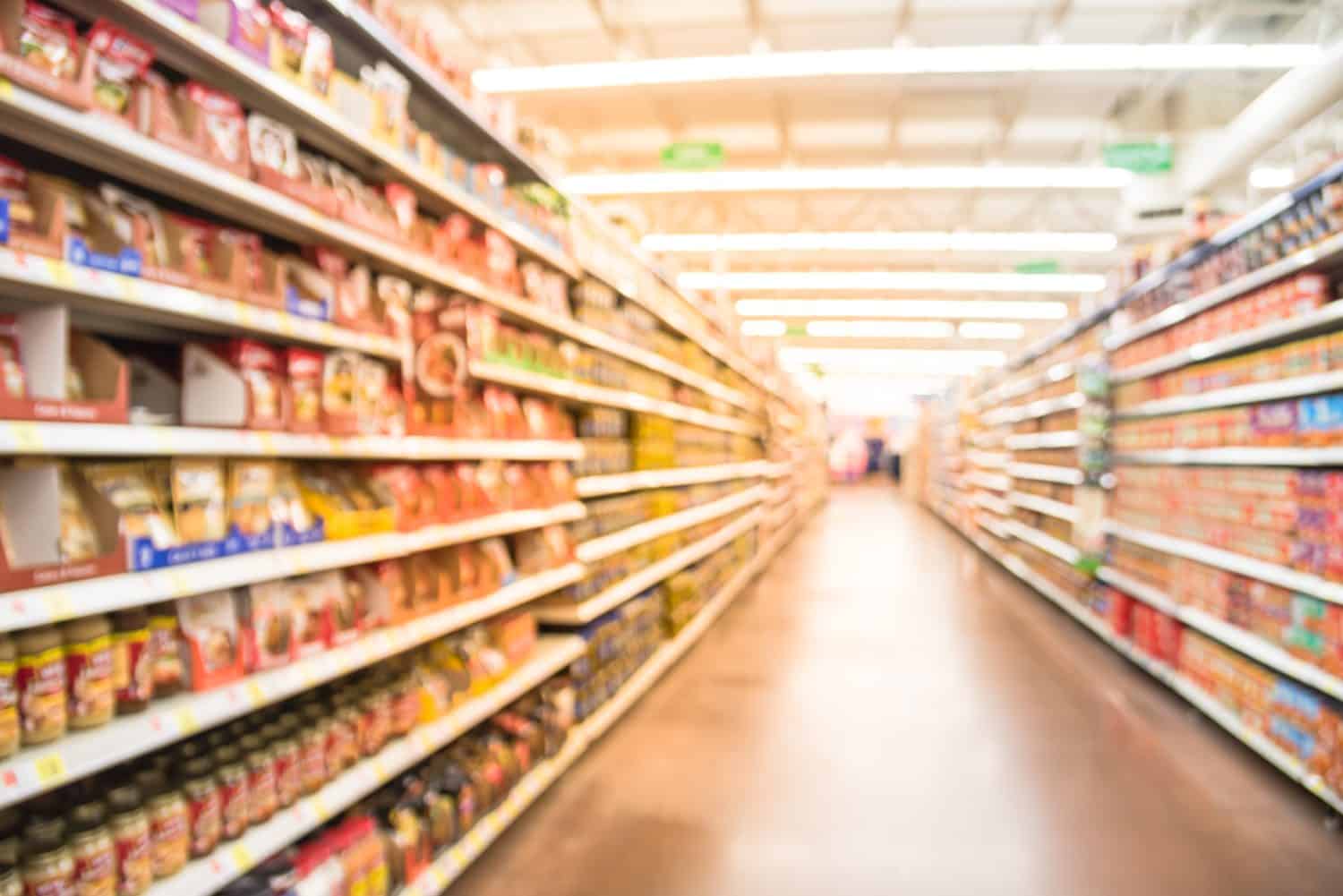
- Total Phthalates found per serving: 13,628 in nanograms
Like Del Monte’s peaches and Annie’s ravioli, Chef Boyardee products also contain high levels of phthalate. The more processed foods you consume, the higher levels of phthalates in your body. This is because this chemical is cumulative, and the nanograms stack up.
Banquet Chicken Pot Pie (paperboard)

- Total Phthalates found per serving: 12,494 in nanograms
Those Banquet meals are very convenient for a night when you don’t want to cook. However, they also contain higher levels of phthalates. Such is the case of the chicken pot pie wrapped in a paperboard.
Perdue Ground Chicken Breast (plastic)
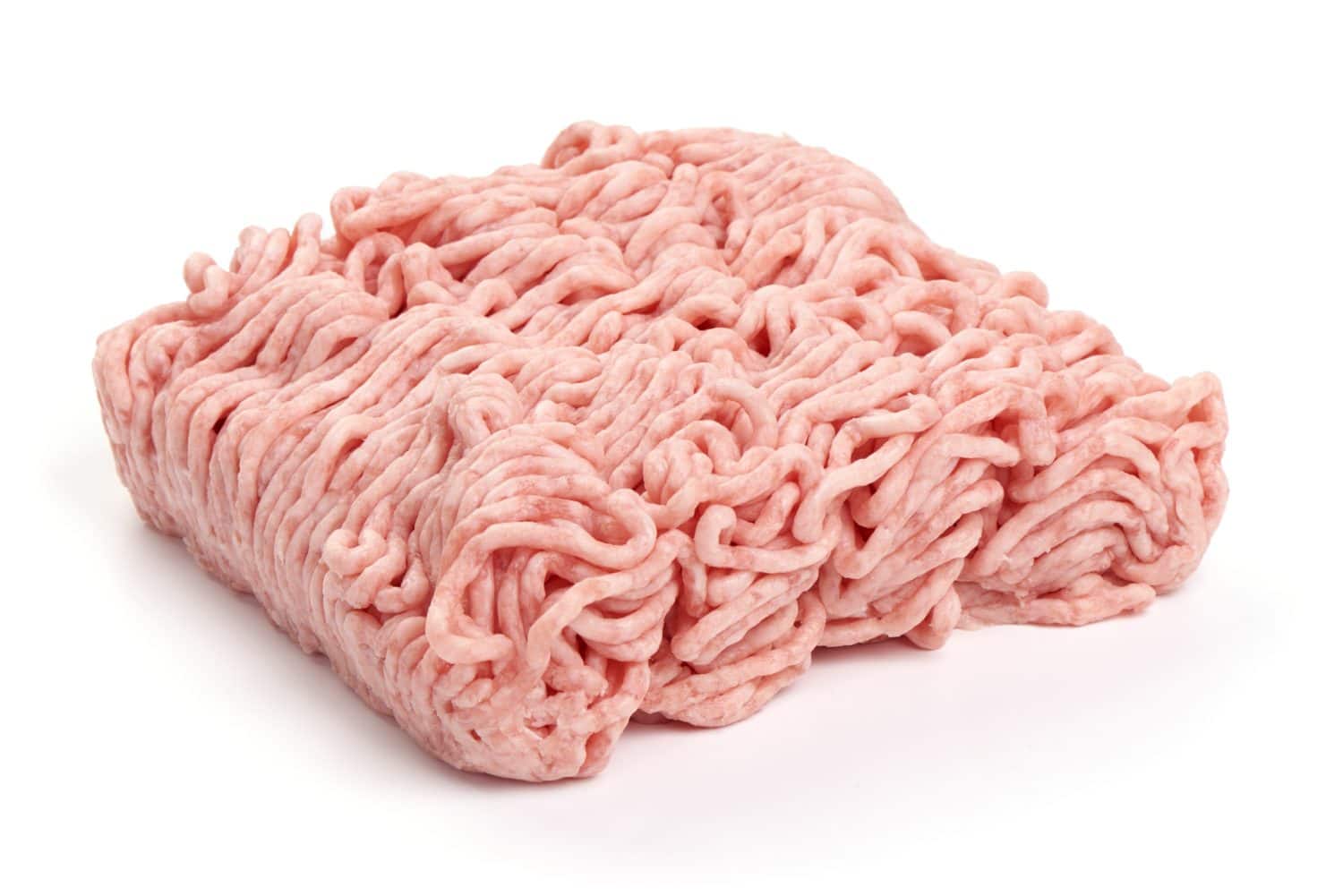
- Total Phthalates found per serving: 9,985 in nanograms
Although chicken is usually considered healthier than beef, it is often the most contaminated meat regarding phthalates. In general, meat typically contains higher levels of this chemical than nonmeat products.
General Mills Cheerios (paperboard box with plastic bag inside)
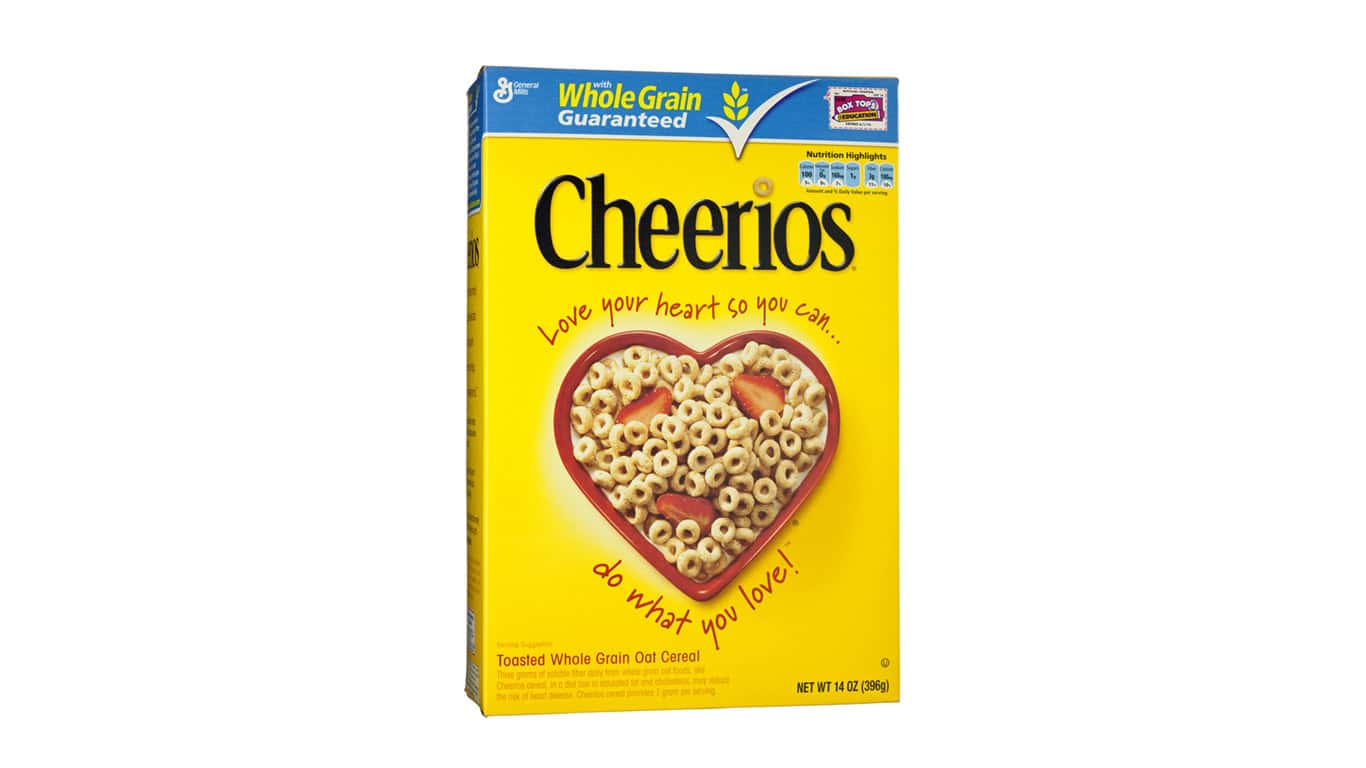
- Total Phthalates found per serving: 10,980 in nanograms
General Mills products were present multiple times during the Consumer Reports study. In this case, the popular cereal Cheerios presented with 10,980 nanograms of phthalates.
McDonald’s Quarter Pounder with Cheese (cardboard)
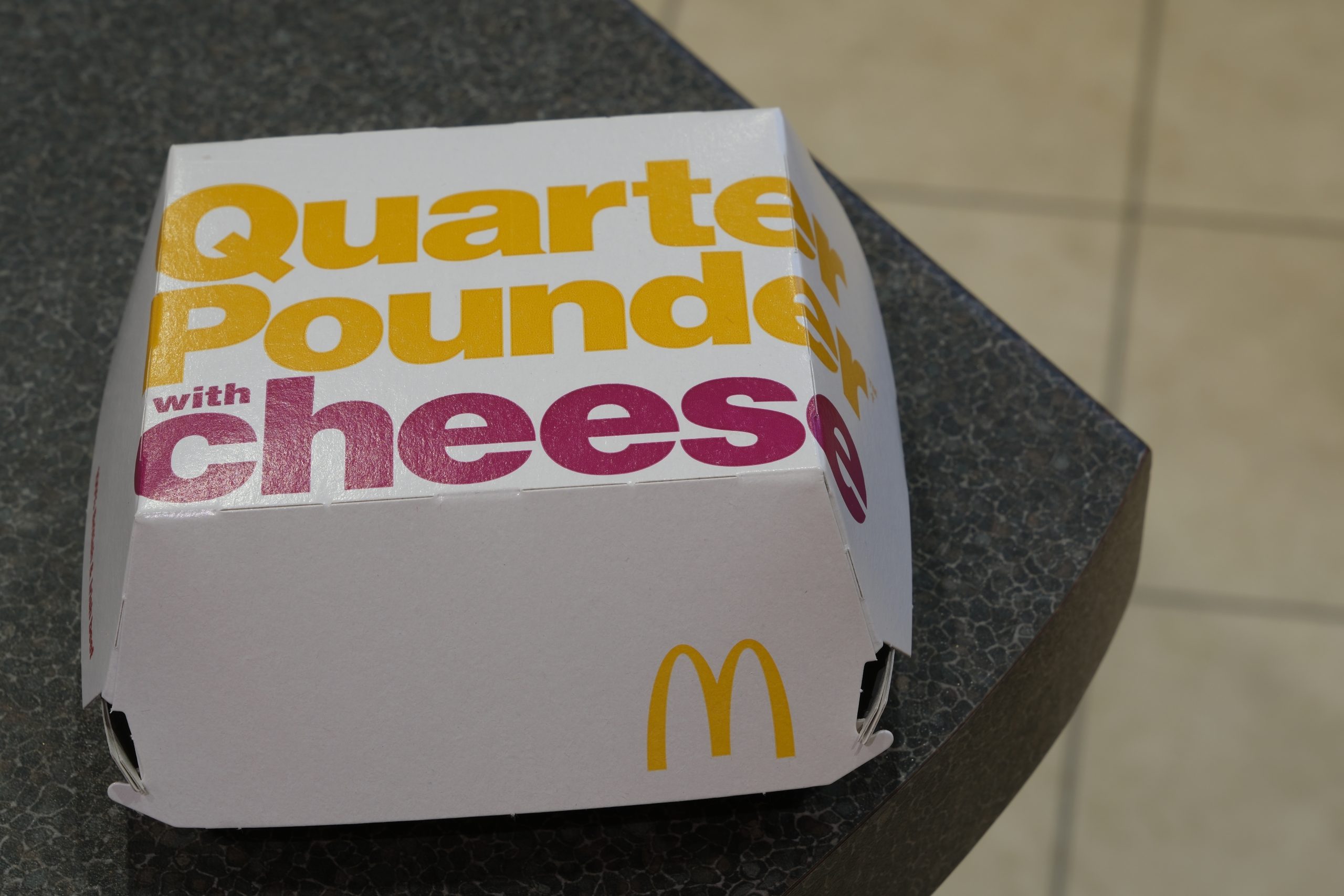
- Total Phthalates found per serving: 9,956 in nanograms
McDonald’s is one of the most popular fast-food chains. However, many of their products present with levels of phthalates, including their Quarter Pounder with Cheese. While this seems small, phthalates can hurt overall long-term health even when a small quantity is present.
Wendy’s Natural-Cut French Fries (paperboard)
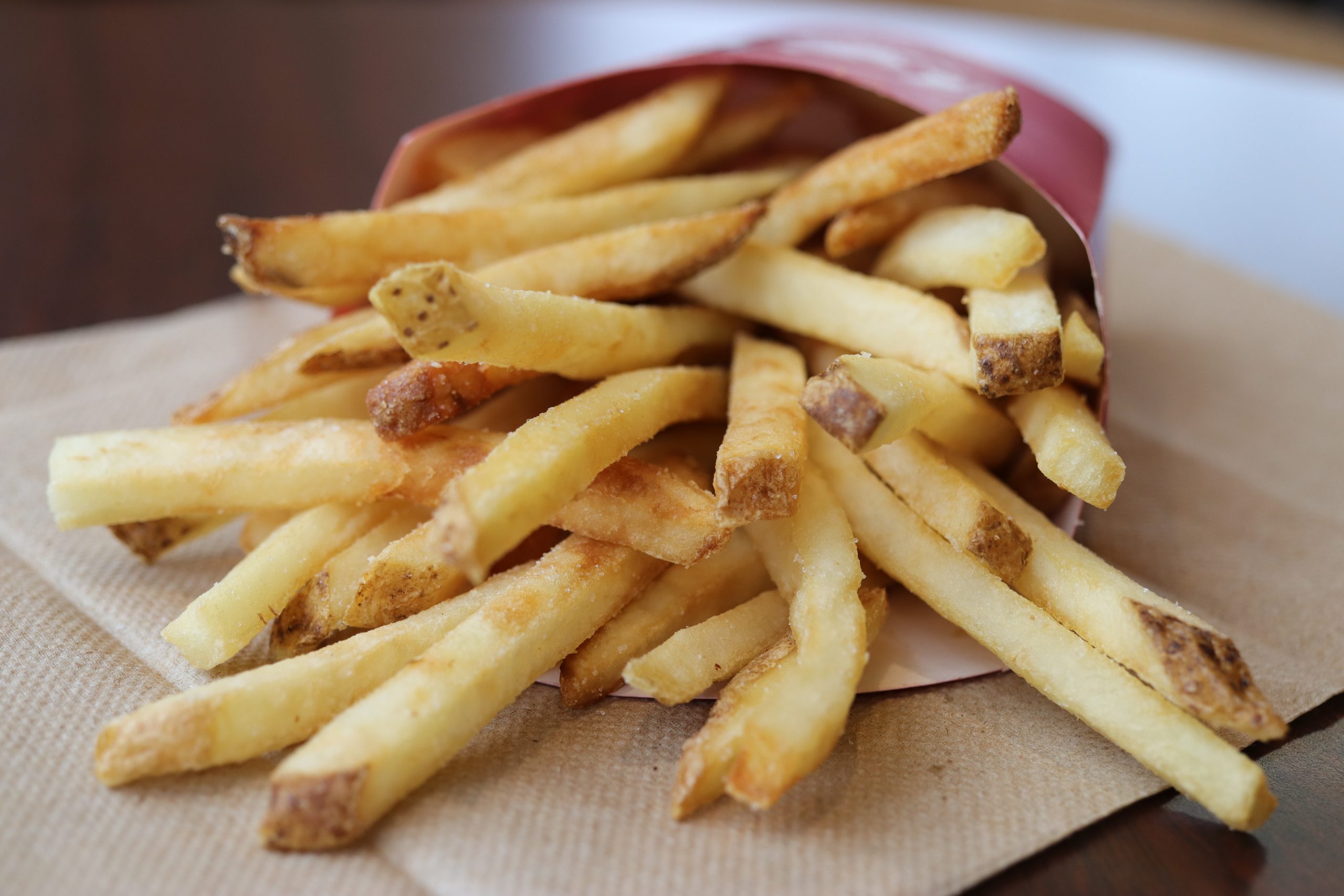
- Total Phthalates found per serving: 8,876 in nanograms
As this study shows, it is hard to avoid phthalates altogether. This chemical is present in much of our food and other items, including french fries (a favorite among kids and adults alike). While we can’t completely avoid phthalates, we can make smarter choices by cutting down on fast food and highly processed foods. Doing so may help eliminate the number of phthalates we consume. (Read our list of fascinating food facts most people don’t know.)
